
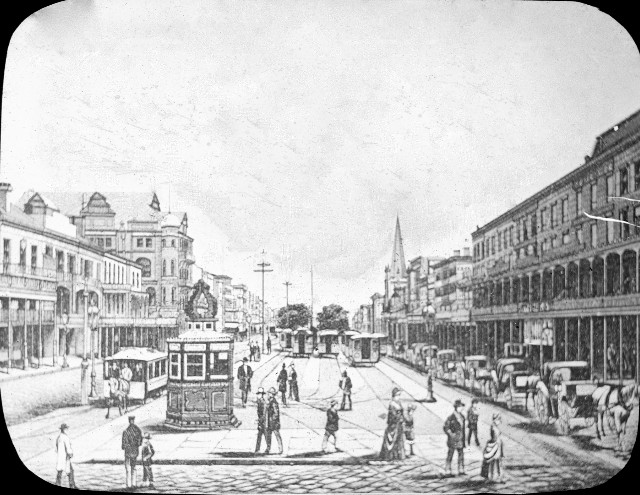
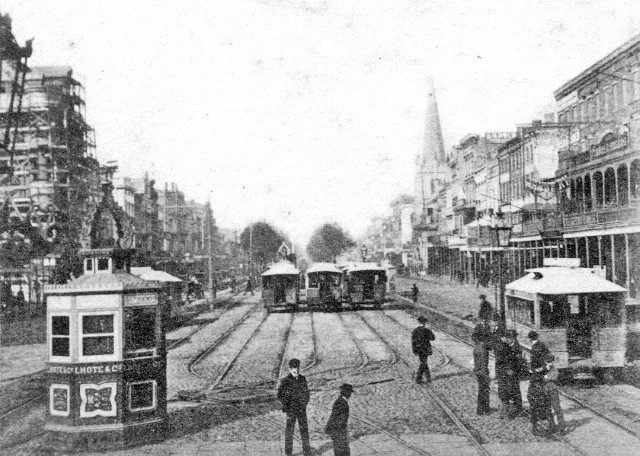
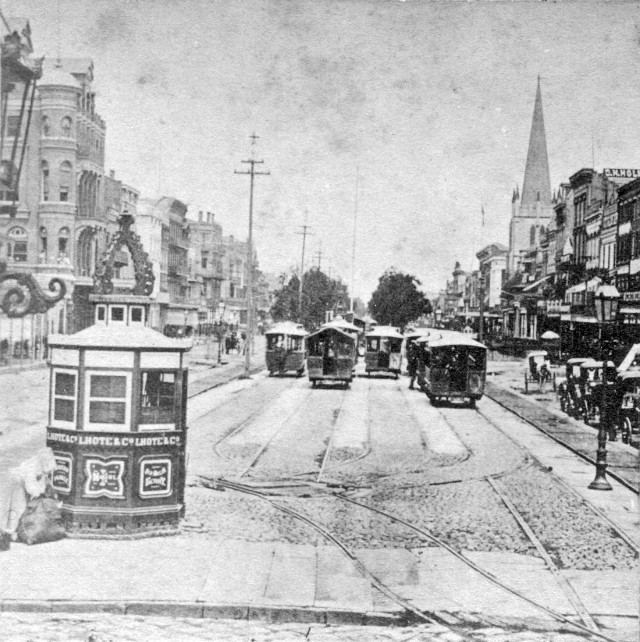

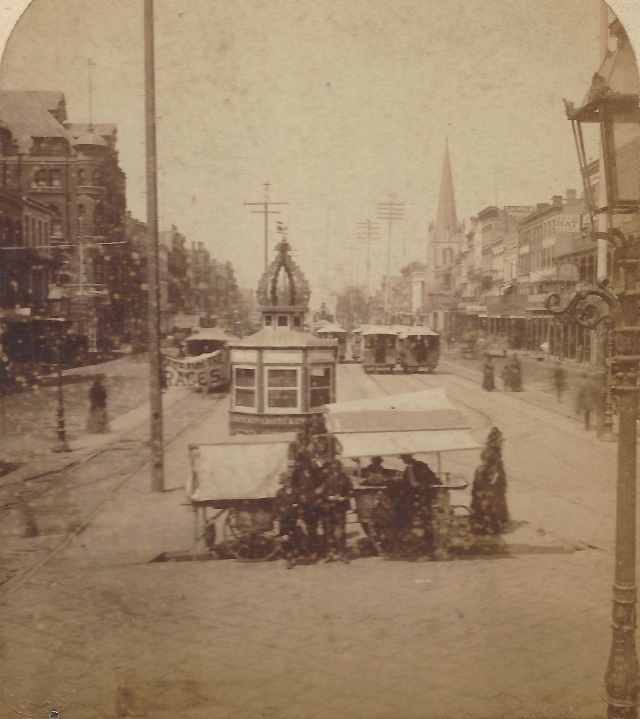
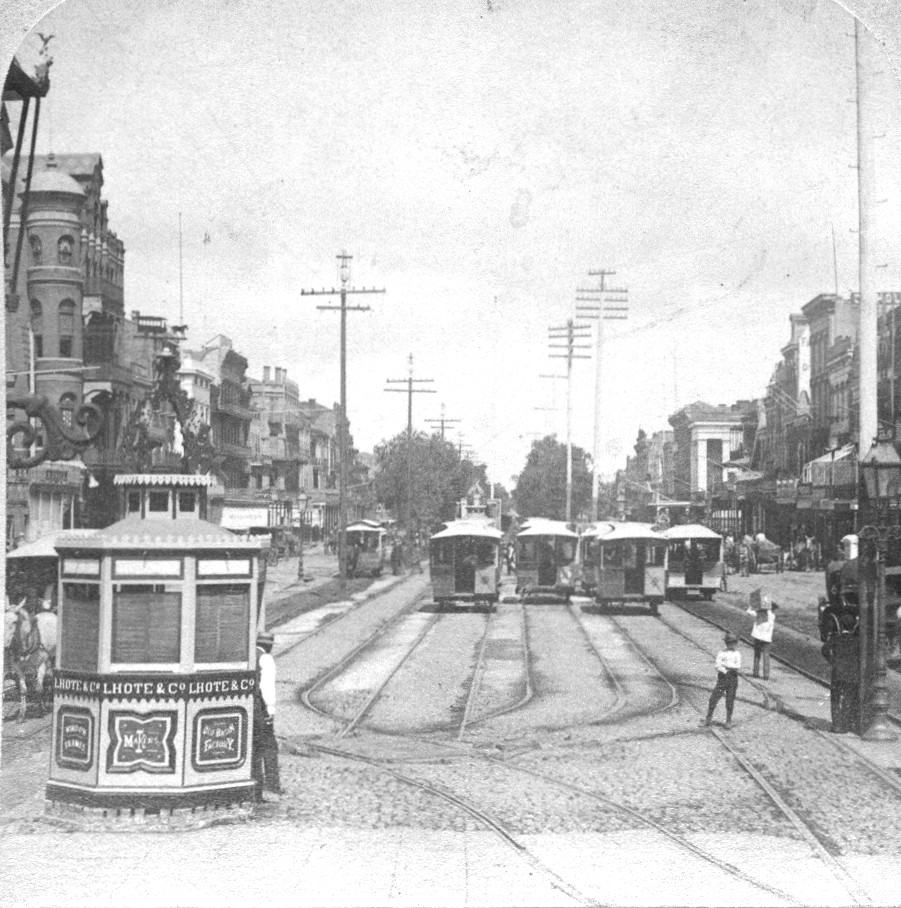
Seven similar views of Canal Street, looking out (toward the lake) from the Henry Clay statue. The top picture is from the Cotton Centennial Exposition souvenir booklet of 1885, and the second is from a “magic lantern” glass slide of the same view. The third, fourth, fifth, and sixth views are from stereoptican cards; their dates are uncertain, but the presence of the church steeple in the distance at the right dates all of the first six pictures to before 1883. The bottom picture is from another stereoptican card, dated 1890. However, the absence of both the church steeple and the light tower dates the bottom picture to between 1883 and 1887. We can see six tracks in the nearest block. Notice the ornate starter's house or ticket booth, with an ornate onion dome seen most clearly in the sixth picture; the track in the foreground, which led around the statue to another turntable; and the “bob tail” style of horse car. We can see trees between the inner New Orleans City RR tracks and the outer Canal & Claiborne Streets RR tracks from Carondelet/Bourbon out toward Claiborne. The third picture gives us a good view of a horse car on the outer lakebound track (at the far right). There is a man in what appears to be a street railway uniform in the front center of this picture, with his hands in his pockets; he may be a car man on break between runs, or perhaps a starter/supervisor. In the foreground of the fifth picture, we see some kind of street vendor sitting on a case in front of his cart. Then there are three men in uniform, probably driver, starter/supervisor, and conductor; the conductor is clearly identified by the “bell punch” around his neck, a sort of portable fare register. The sixth picture also has two street vendors and their carts in the foreground. It displays a cloth sign hanging between a pole at the left and the starter's house. The sign is only partly legible: “...for the races.” The four interior tracks all connect to the turntable near the starter's house, while the two outer tracks extend past the photographer toward the river (to the photographer's back). The turntable itself is not centered on the four tracks that connect to it, but is in line with the second from our left. The rightmost of those four inner tracks also extends past the photographer, as does a connecting track from the turntable. It appears that cars approached the turntable in the foreground from the leftmost of the four inner tracks, and used the other three to begin their return trips. Perhaps the three outbound tracks constituted a layover area, or perhaps different routes started from different tracks. — Mugnier (third); W. M. Chase (fourth); Centenial Photographic Co., Edward L. Wilson (sixth); J. F. Jarvis (bottom)






